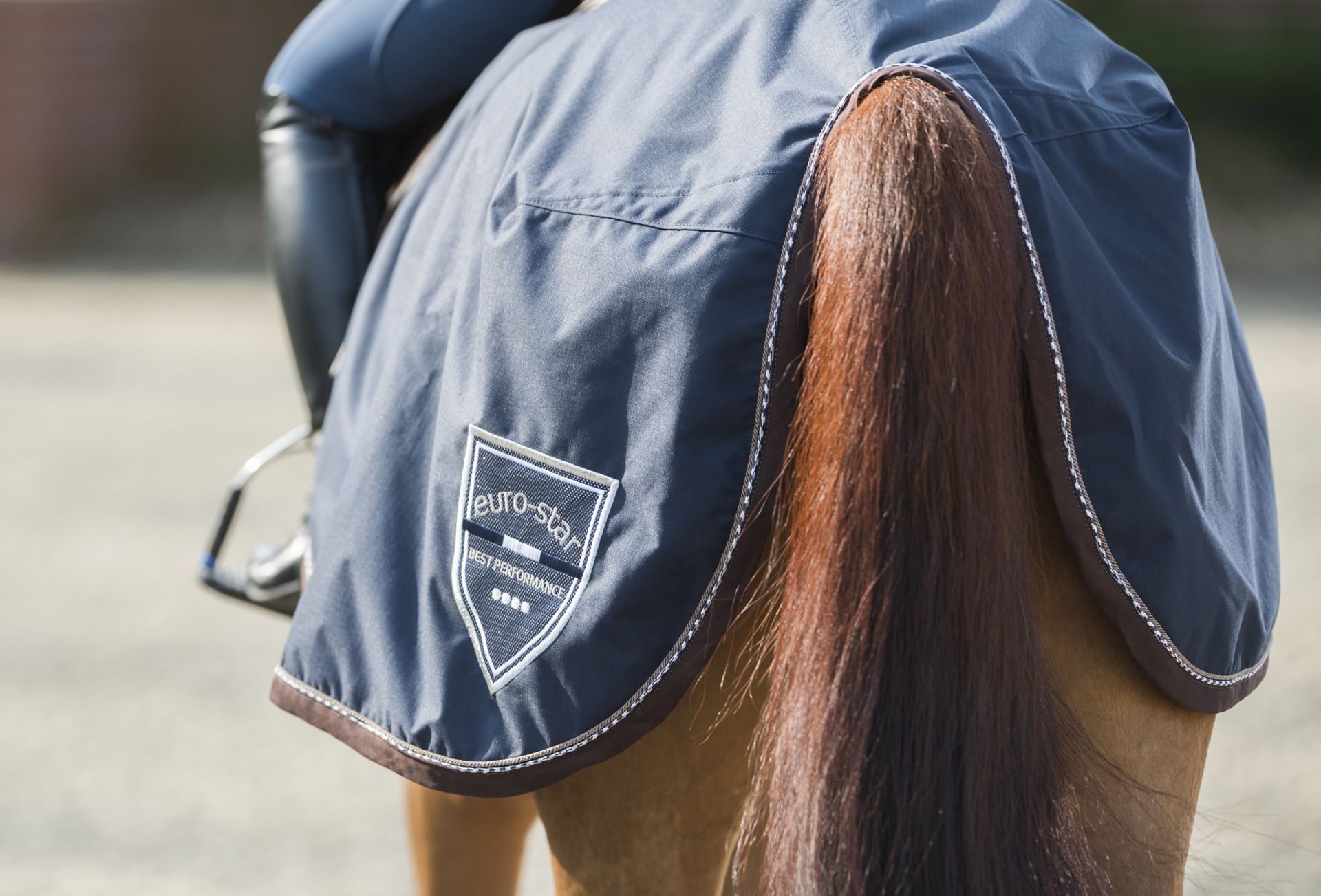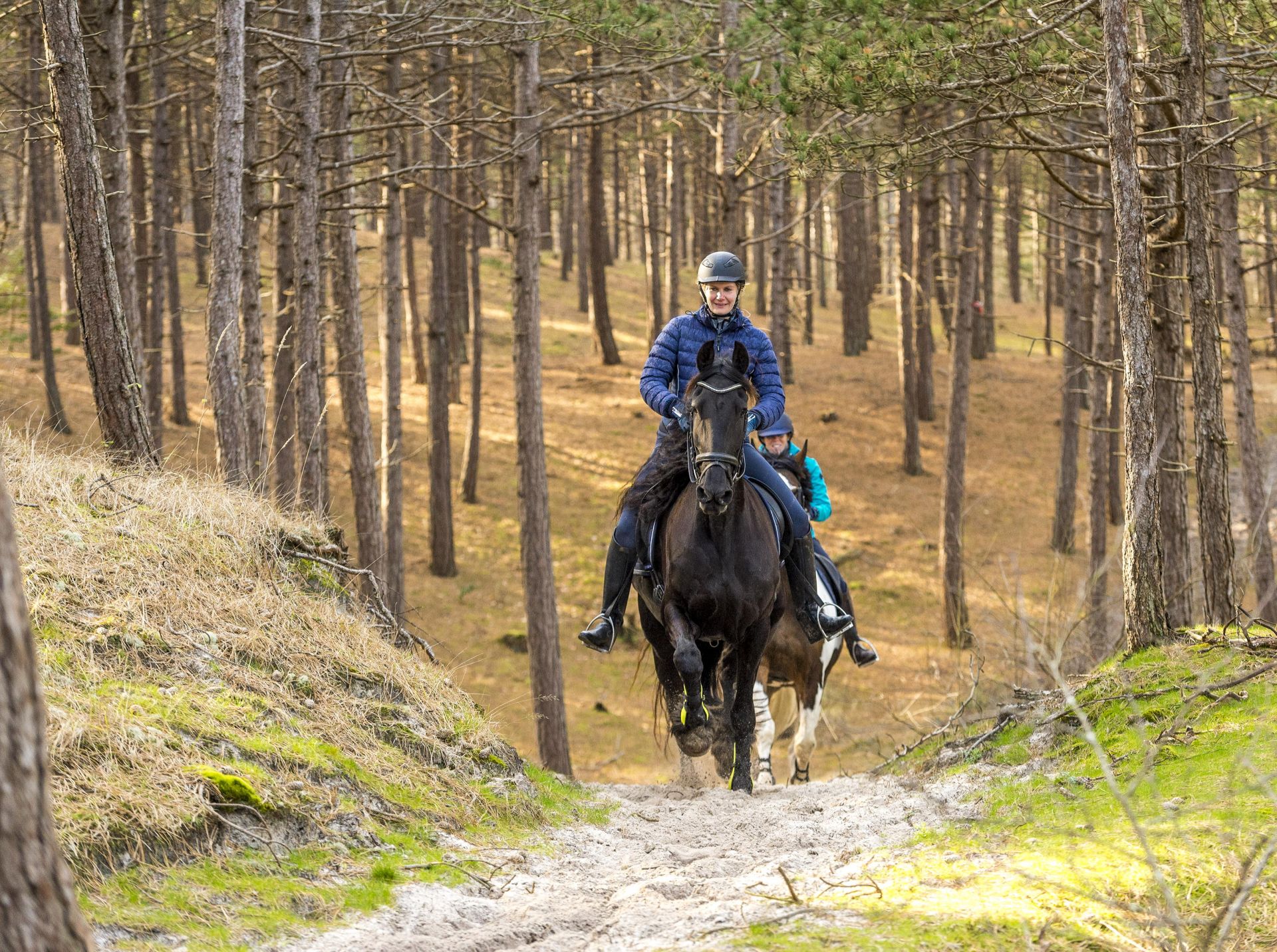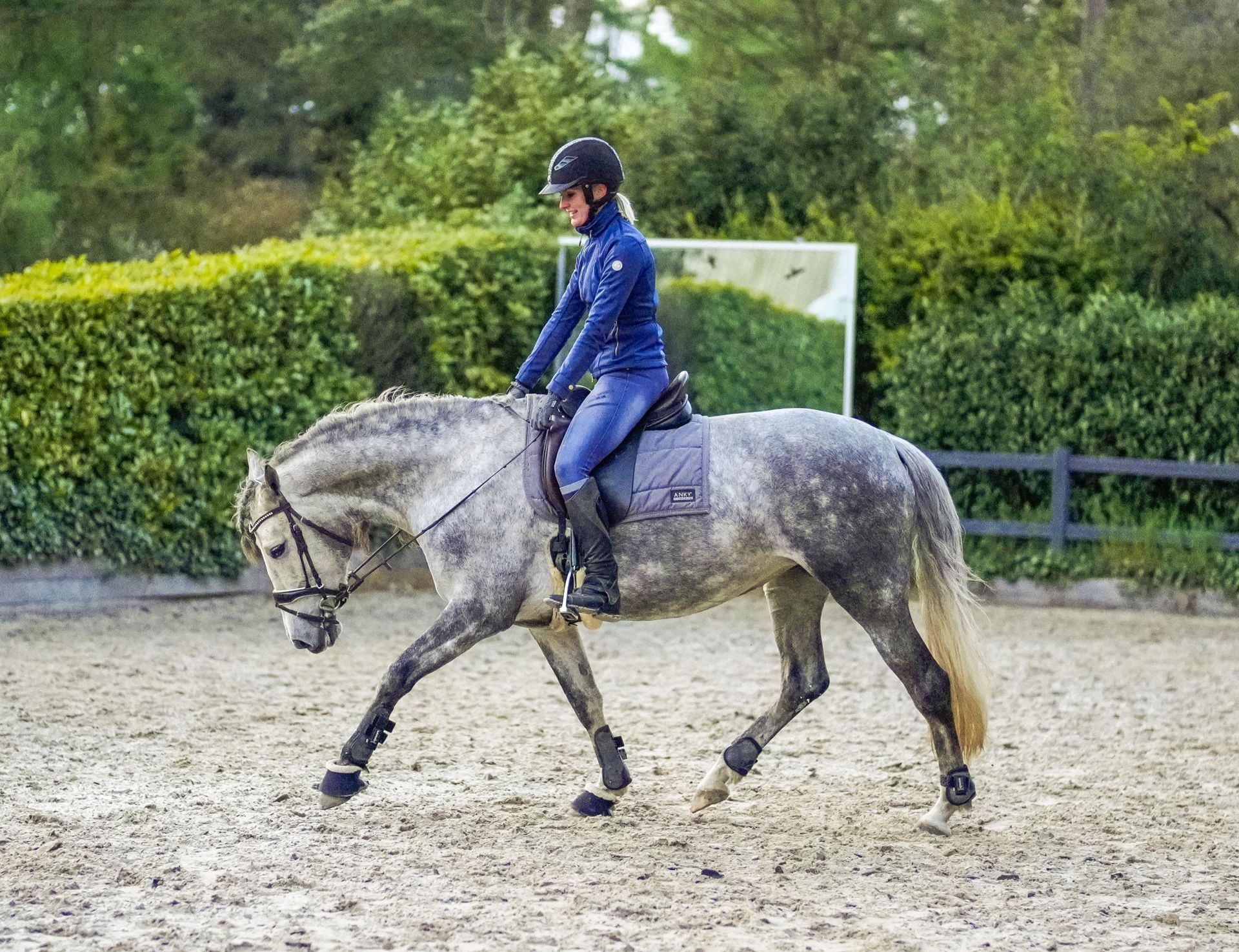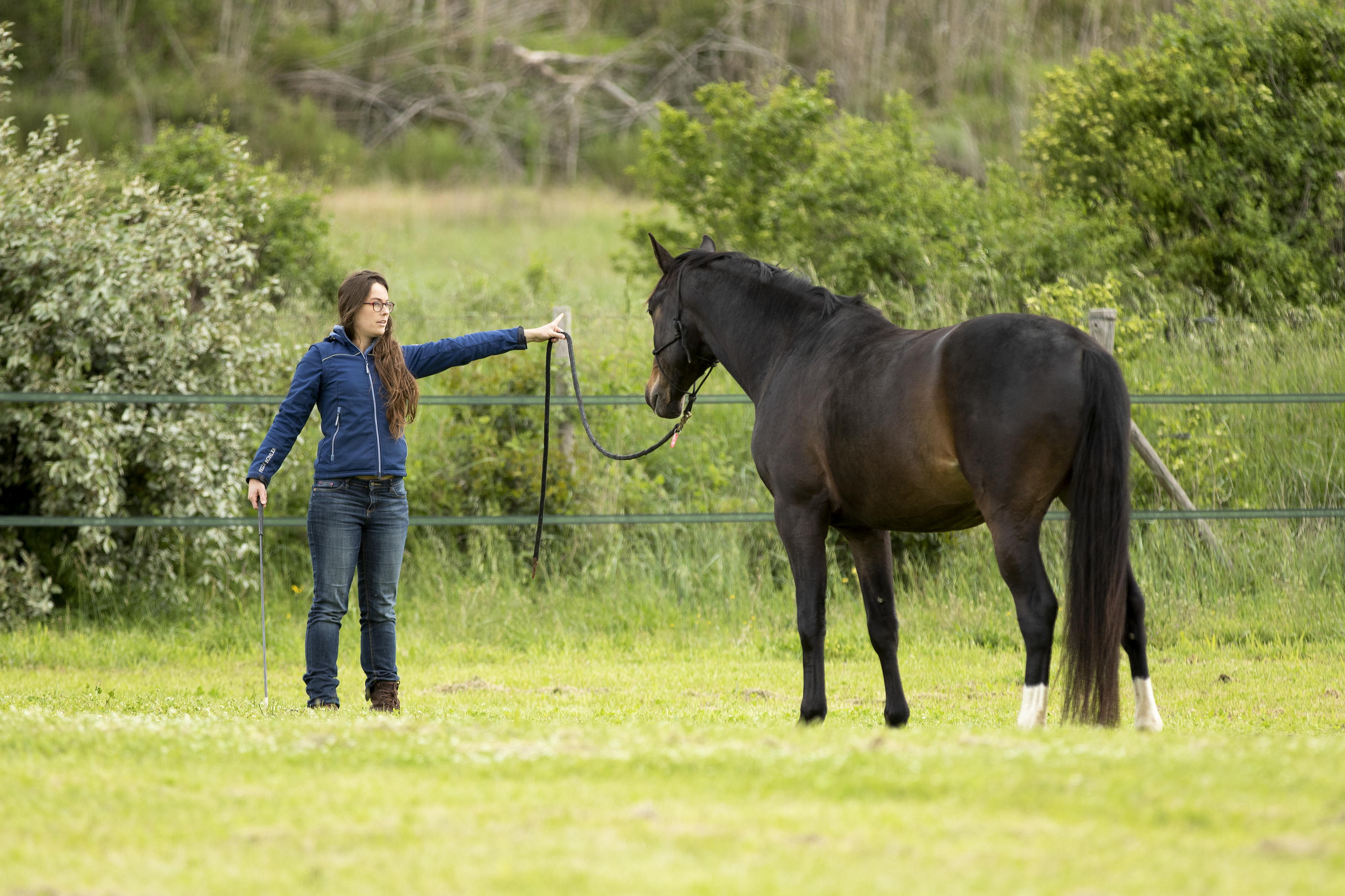This is how to train an older horse
The saying goes, ‘You’re only as old as you feel’. But does the same thing apply to horses too? Can you simply continue training them if they’re still feeling fit? Or should you start to take things a little easier with an older horse? Dr. Carolien Munsters, exercise physiologist for horses, can tell you everything you need to know about training an older horse.
“Too much rest will result in rust! Exercise is always important, especially for older horses”, according to exercise physiologist Dr. Carolien Munsters from Moxie Sport. She’s an expert in horse sports physiology and practical sport coaching. “The more a horse stands still, the stiffer he’ll become. So the more he can continue to move and exercise, the better it will be. Of course this will also depend on the horse’s age and any possible veterinary limitations.” Exercise certainly doesn’t just include saddled riding, but also plenty of free, unloaded movement.
“Allow an older horse to walk outside as much as possible, either in the paddock or out in the meadow. This isn’t just good for the horse’s physical health, but certainly also for his mental well-being.” Do make sure the meadow isn’t too rich, as this could result in the horse taking in too much energy, protein and sugar. Is your older horse still physically in good shape? Then you can definitely continue to ride him. “The age up to which you can do so will differ per horse. Some horses will happily continue being ridden until they’re thirty, whilst others are quite ‘done’ by the time they reach eighteen. This is all down to the horse’s anatomy, his health and his history”, according to Carolien.
Warming-up
Warming up is of extra importance to older horses. “But the ‘warming up’ description says it all, it does need to warm the horse up. That simply won’t happen if you’re just walking. Start off with ten minutes of easy walking, but then allow the horse to pick up the pace a little. Do some trotting every now and then and include some big circles.” It’s a good idea to use a blanket for walking during the winter months. “Clipped horses can cool down more quickly when you're riding outside during the winter period. They can definitely also become a little more sensitive to colder temperatures once they reach a certain age.”


Tip: warming up without a saddle "You can get the muscles working before you get into the saddle. The ‘carrot stretch’ is a fun exercise you can do in the stable. You can get the horse to stretch nicely with a carrot or some other treat. This will allow you to work on the longitudinal bending and training the back muscles. These are the exact muscles which tend to deteriorate in older horses. Groundwork can also be a great way to warm up. This will ensure the horse is going to be warm and flexible before you head off. This can be done either with the double lunge or by hand. You could practice, for example, the longitudinal bend to the left and right.”
Exercise Physiologist Dr. Carolien Munsters
Training
How intensively can an older horse be trained? “Some people are worried about overloading their old horse and end up training them very lightly. This really just equates to exercise, rather than training. But there really is no problem with getting them to do a little work, obviously providing they can handle this physically. You will often find that older horses’ strength starts to deteriorate, rather than their stamina. That’s why I would recommend doing a little more intensive training for brief periods once or twice, making sure the horse’s strength and therefore his muscle mass are appropriately maintained. An older horse will quickly experience something as intensive, but you could include things like galloping slightly faster for brief distances (towards a medium canter) or switching more in each gait.
Plus you could also include a hill or viaduct every now and then when you’re enjoying an outside ride. You could do this a few times per training session twice a week. This will ensure you’re doing just that little more than normal and the muscles will be nicely stimulated. The horse will therefore be getting sufficient training stimuli.” Is your horse fit enough to do a low jump? Go for it! “This isn’t just good for the muscle build up, but a bit of variation is obviously great fun too. Or possibly include a little cavaletti work. It goes without saying everything needs to be in moderation. Don’t start racing or attempting high jumps, do remember that his joints are pretty old too.”

Variety keeps your horse young.

Tip: briefly and often "If your horse is veterinary fit, you can easily ride him for half an hour to three quarters of an hour three times a week. This will allow you to build up and maintain the muscles. It’s never a good idea to just ride once a week and then instantly turn it into a long outside ride. It’s much better to go out for shorter rides more often. You are obliged to ensure your horse is fit enough to take on such a long outside ride. Don’t just head out during the weekend, but make sure your horse has plenty of training during the week too.”
Exercise Physiologist Dr. Carolien Munsters
Cooling-down
Finish off the training with a good cooling down session, lasting at least ten minutes. “That really doesn’t need to be any different to how younger horses cool down. Many older horses will be training a little more lightly. That means you won’t really need a cooling down session for the removal of waste, but this would be more of a cool down to aid flexibility. Try to vary things as much as possible where the posture is concerned. Adjust the horse a little higher or lower and make sure he stretches his neck. You also have the option of completing the cooling down session next to your horse, providing him with a little extra relief. For the sake of variety, you could finish off with a few groundwork exercises.”


"There are horses which will suffer too much from old age, stiffness or arthritis. A little bit of stiffness, or needing some extra time to warm up, is quite acceptable. But, for example, if the horse needs more than twenty minutes of walking to no longer walk stiffly, then that’s where it ends. You should no longer be riding this horse. Always discuss things with your vet.”
Exercise Physiologist Dr. Carolien Munsters
Other exercises
Once riding is no longer an option, there will still be plenty of other nice things you can do with your horse to keep him exercising. “Groundwork, for example. This will allow you to continue to be actively involved with your horse and it means he will continue to use his muscles. You can vary the groundwork exercises where your surroundings are concerned. Don’t just stay in the riding lane, but possibly spend some time in the meadow or forest too.” Another fun idea: go for a nice walk, practice strutting by hand or challenge the horse with various different objects. “You could, for example, teach him to walk across a tarp, or walk past an umbrella. This will keep your horse mentally fit and healthy. Also continue to brush him at least a couple of times a week. In short: continue giving your horse the attention he deserves.

